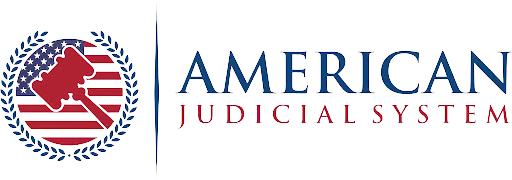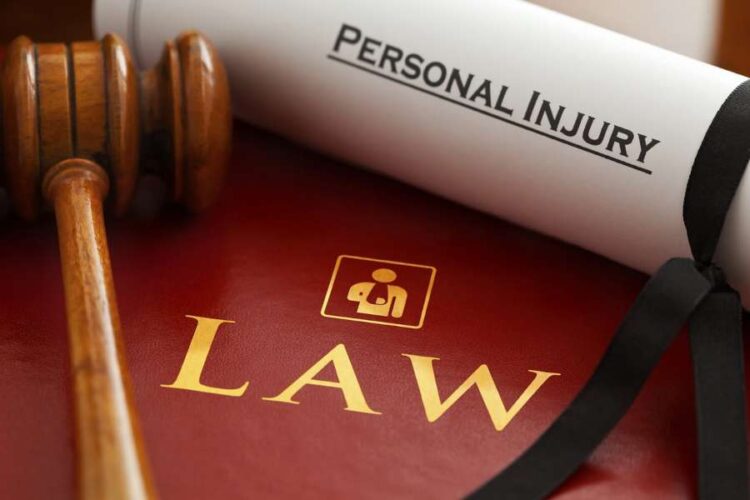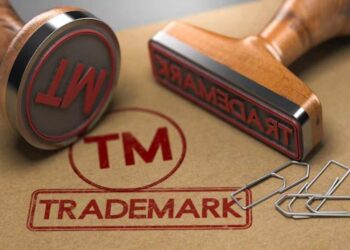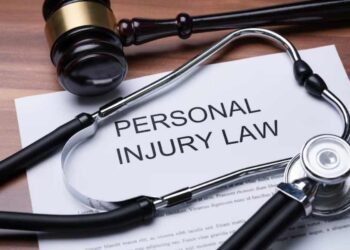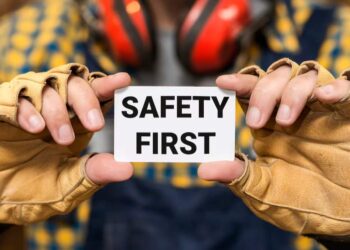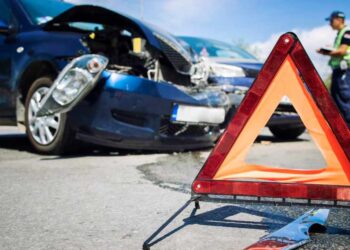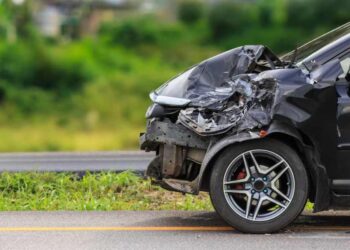Personal injury cases arise when an individual suffers harm due to another party’s negligence or intentional misconduct. Whether it’s a car accident, workplace injury, medical malpractice, or slip-and-fall, determining liability is crucial for seeking compensation. Understanding who is liable in a personal injury case helps victims navigate legal proceedings and claim the rightful compensation they deserve. This article explores liability factors, legal principles, and essential steps for proving fault in personal injury claims.
Who is Liable in a Personal Injury Case?
Liability in a personal injury case depends on negligence, duty of care, and causation. The responsible party is often the person or entity whose actions directly caused the injury. This could be a driver in a car accident, a property owner in a slip-and-fall case, or a manufacturer in a defective product claim. Courts determine liability based on evidence, legal statutes, and the extent of negligence involved. Consulting a personal injury lawyer can help establish fault and maximize compensation.
Exploring Legal Responsibility in Personal Injury Claims
Determining liability in a personal injury claim involves examining the relationship between the injured party and the responsible entity. Personal injury claims are primarily based on negligence, which occurs when a party fails to exercise reasonable care, leading to harm. Victims must establish liability to recover compensation for medical bills, lost wages, and other damages.
In many cases, liability is straightforward. For instance, in rear-end car accidents, the driver who struck the vehicle from behind is typically at fault. However, some cases involve shared responsibility, where multiple parties may be liable. Many states follow comparative negligence laws, allowing victims to recover compensation even if they were partially responsible for the accident, though their settlement may be reduced accordingly.
Certain cases involve strict liability, particularly in product defect claims. If a consumer is harmed by a defective product, the manufacturer or seller may be held responsible regardless of negligence. Similarly, proving liability in a personal injury case related to medical malpractice requires demonstrating that a healthcare provider failed to meet industry standards, directly causing injury. These claims often rely on expert testimony to establish liability.
Another critical area of liability is workplace injuries. Employers are legally required to provide a safe working environment. Under workers’ compensation laws, employees can receive benefits without proving employer negligence. However, additional legal claims may be pursued if the injury results from intentional misconduct or third-party negligence.
Understanding these different types of liability is crucial in personal injury cases. Whether the claim involves negligence, strict liability, or workplace injuries, gathering strong evidence and consulting a legal professional can significantly impact the outcome of a case.
Common Scenarios Where Liability Applies
Car Accidents and Liability
In most car accidents, liability falls on the driver responsible for causing the crash. If a driver violates traffic laws, speeds, drives distracted, or is under the influence, they can be held accountable for resulting injuries. Some states follow comparative fault laws, meaning an injured party can still recover compensation even if they are partially responsible. However, their settlement may be reduced based on their level of fault.
Slip and Fall Accidents
Property owners are legally required to maintain safe premises for visitors. They may be held liable if they neglect this duty and someone is injured due to hazards like wet floors, poor lighting, or uneven surfaces. Commercial property owners are often held to a higher standard, must conduct routine inspections, and provide adequate warnings about potential risks.
Medical Malpractice and Liability
Medical malpractice occurs when healthcare providers fail to meet the accepted standard of care, leading to patient harm. This can involve misdiagnosis, surgical mistakes, or medication errors. Proving negligence often requires expert testimony and detailed evidence. Victims of medical malpractice may seek compensation for medical expenses, lost wages, and emotional suffering.
Workplace Injuries and Employer Responsibility
Employers must provide a safe work environment, and injured employees are typically covered under workers’ compensation laws, which provide benefits regardless of fault. However, if an employer’s negligence—such as failure to provide safety equipment—contributes to an injury, the employee may file a personal injury lawsuit to seek additional compensation.
Defective Products and Manufacturer Liability
Manufacturers and sellers are strictly liable for defective products that cause harm. A claim can arise from design defects, manufacturing defects, or inadequate warnings. Injured consumers do not have to prove negligence but must show the defect directly caused their injuries. Many companies issue recalls, but victims can still seek legal action for damages.
Elements Needed to Prove Liability
Certain legal elements must be proven to determine liability in a personal injury case. These elements help establish whether the defendant is responsible for the plaintiff’s injuries and if compensation is warranted. Below are the key factors in proving liability in a personal injury claim:
- Duty of Care: The first step in proving liability is establishing that the defendant owed a duty of care to the plaintiff. This means the defendant was legally responsible for acting reasonably and safely to prevent harm. For instance, drivers must follow traffic laws and drive safely, property owners must maintain safe premises, and doctors are expected to provide proper medical care to their patients.
- Breach of Duty: Once the duty of care is established, the plaintiff must demonstrate that the defendant breached this duty. A breach occurs when the defendant fails to act reasonably, leading to hazardous conditions. Examples include a driver running a red light, a store owner neglecting to clean up a spill, or a healthcare professional making a medical error. If the defendant’s actions or inactions are considered negligent, they may be held responsible for the resulting injuries.
- Causation: The plaintiff must prove that the defendant’s breach of duty caused their injuries. This means clearly linking the negligent act and the harm suffered. For example, in a slip-and-fall accident, the injured party must prove that the fall was due to the store’s negligence, such as a wet floor without warning signs. The claim may be weaker if an unrelated factor contributed to the injury.
- Damages: To receive compensation, the plaintiff must show that they suffered actual damages due to the defendant’s actions. Damages can be financial, physical, or emotional, including medical expenses, lost wages, property damage, or pain and suffering. Without documented damages, even a clear breach of duty may not result in a successful claim.
- Evidence Collection: A strong personal injury claim relies on substantial evidence. Medical records, accident reports, and witness statements help establish the severity of injuries and prove the defendant’s negligence. Photographic evidence, surveillance footage, and expert testimony can further strengthen the case, ensuring the injured party has sufficient proof to support their claim.
How Liability is Determined in Court
Liability is established through evidence, legal precedents, and expert testimony when a personal injury case is brought to court. The process requires thoroughly evaluating the facts and legal arguments to determine responsibility. Below is a step-by-step breakdown of how liability is determined in court:
- The burden of Proof on the Plaintiff: In personal injury cases, the burden of proof rests on the plaintiff, meaning the injured party must provide sufficient evidence to demonstrate that the defendant’s negligence directly caused their injuries. This requires proving four key elements: duty of care, breach of duty, causation, and damages. The claim may not hold up in court without clear and convincing proof.
- Presentation of Evidence: Evidence plays a crucial role in establishing liability. Plaintiffs and their legal teams must gather medical records, accident reports, witness statements, and photographic or video documentation. Physical evidence, such as damaged property or surveillance footage, can support the claim. The stronger the evidence, the higher the likelihood of proving liability.
- Comparative Negligence Defense: In many cases, defendants argue comparative negligence, claiming that the plaintiff was partially responsible for their injuries. If the court finds that the plaintiff contributed to the accident in any way, their compensation may be reduced accordingly. For example, if a pedestrian was crossing the street outside a designated crosswalk when a speeding driver hit them, both parties might share liability.
- The Role of Insurance Companies: Insurance companies often play a significant role in personal injury cases. Rather than proceeding to trial, many cases are resolved through settlements negotiated between the plaintiff’s attorney and the insurance provider. Insurers may attempt to minimize payouts by disputing the severity of injuries or shifting blame. Having a skilled attorney can help ensure a fair settlement.
- Expert Testimony in Court: Expert witnesses are called to provide professional opinions on liability in more complex cases. Medical experts can testify about the extent of injuries, while accident reconstruction specialists analyze how the incident occurred. Expert testimony helps clarify technical aspects of the case, strengthening the plaintiff’s argument.
- Legal Strategy and Attorney Representation: A strong legal strategy is essential for proving liability and maximizing compensation. Personal injury attorneys help clients navigate the legal process, gather crucial evidence, and counter-defense arguments. Skilled representation can differentiate between a successful claim and a dismissed case.
Who Can Be Held Liable in Personal Injury Cases?
Liability in personal injury cases depends on who caused the harm and the circumstances surrounding the injury. Several parties may be responsible, including drivers, property owners, employers, healthcare professionals, and manufacturers.
Negligent Drivers
Car accidents often result from driver negligence, such as speeding, distracted driving, or driving under the influence. When drivers violate traffic laws or act recklessly, they can be held liable for injuries to passengers, pedestrians, and other motorists.
Property Owners
Property owners must maintain safe premises for visitors. The property owner may be responsible if someone slips, trips, or falls due to unsafe conditions—such as wet floors, poor lighting, or uneven surfaces. Commercial property owners are held to higher safety standards.
Employers
Workplace injuries are covered under workers’ compensation, but employees may have grounds for a lawsuit in cases of employer negligence—such as failing to provide safety equipment. Employers are responsible for maintaining a hazard-free work environment.
Healthcare Professionals
Medical malpractice occurs when doctors, nurses, or hospitals fail to meet the standard of care, leading to misdiagnosis, surgical errors, or medication mistakes. Patients harmed by medical negligence can seek compensation for their injuries.
Manufacturers and Sellers
Manufacturers and retailers are liable for injuries caused by defective products. Whether due to design flaws, production errors, or inadequate safety warnings, consumers can file claims against companies responsible for unsafe products.
Conclusion
Determining liability in a personal injury case is essential for obtaining justice and fair compensation. Whether the responsible party is a negligent driver, employer, or property owner, collecting strong evidence and seeking legal guidance can strengthen a personal injury claim. Victims can pursue the financial recovery they deserve by establishing negligence and proving damages.
FAQ’s
Q. What is the first step in proving liability in a personal injury case?
A. Collecting evidence such as medical records, accident reports, and witness statements is essential for proving liability.
Q. Can multiple parties be liable in a personal injury case?
A. Yes, multiple parties can share liability, especially in comparative negligence cases.
Q. What if I am partially at fault for my injury?
A. Depending on your state’s legal system, you may still recover compensation under comparative negligence laws.
Q. How long do I have to file a personal injury claim?
A. Statutes of limitations vary by state, typically one to four years.
Q. Do I need a lawyer for a personal injury case?
A. While not mandatory, hiring a personal injury lawyer significantly improves your chances of winning compensation.

